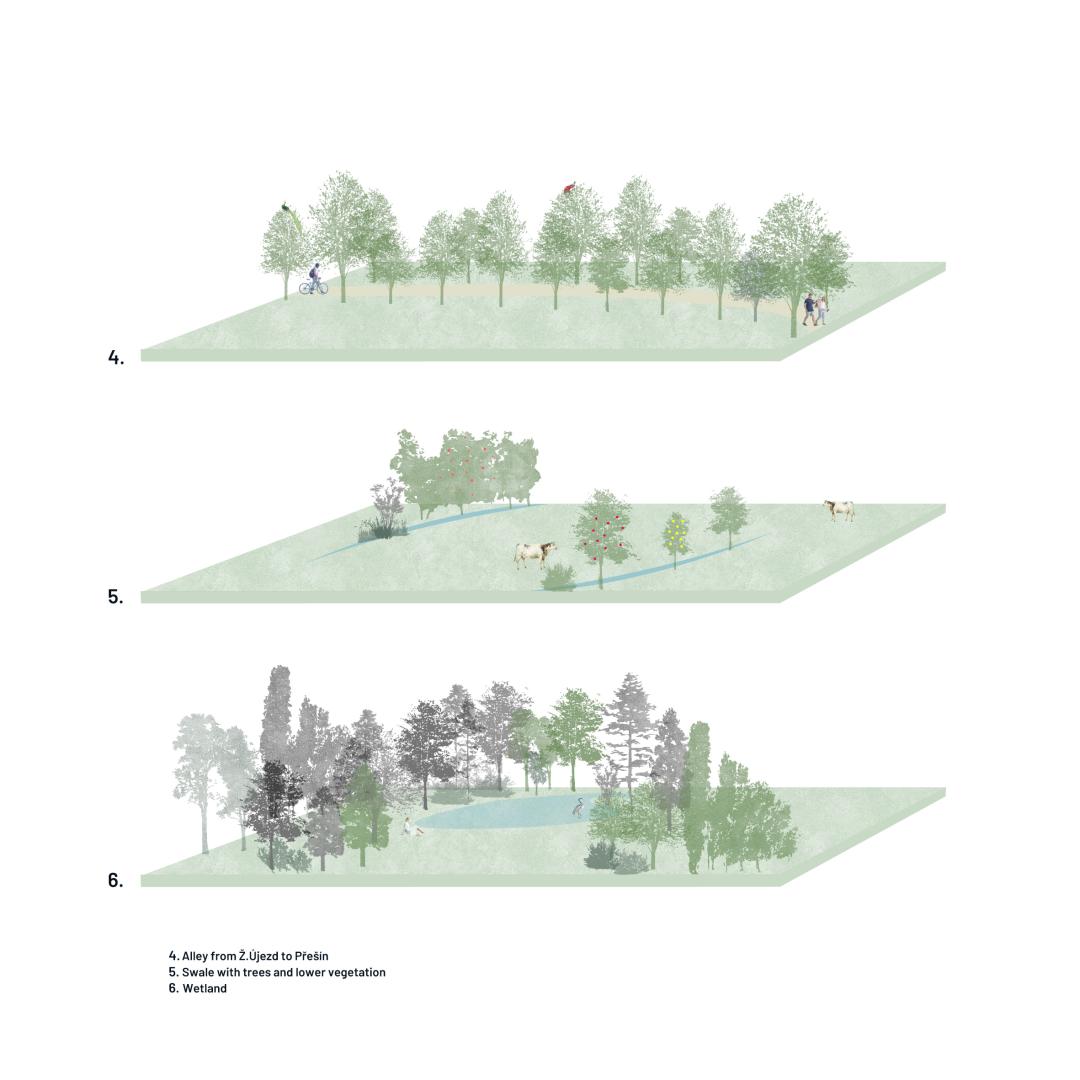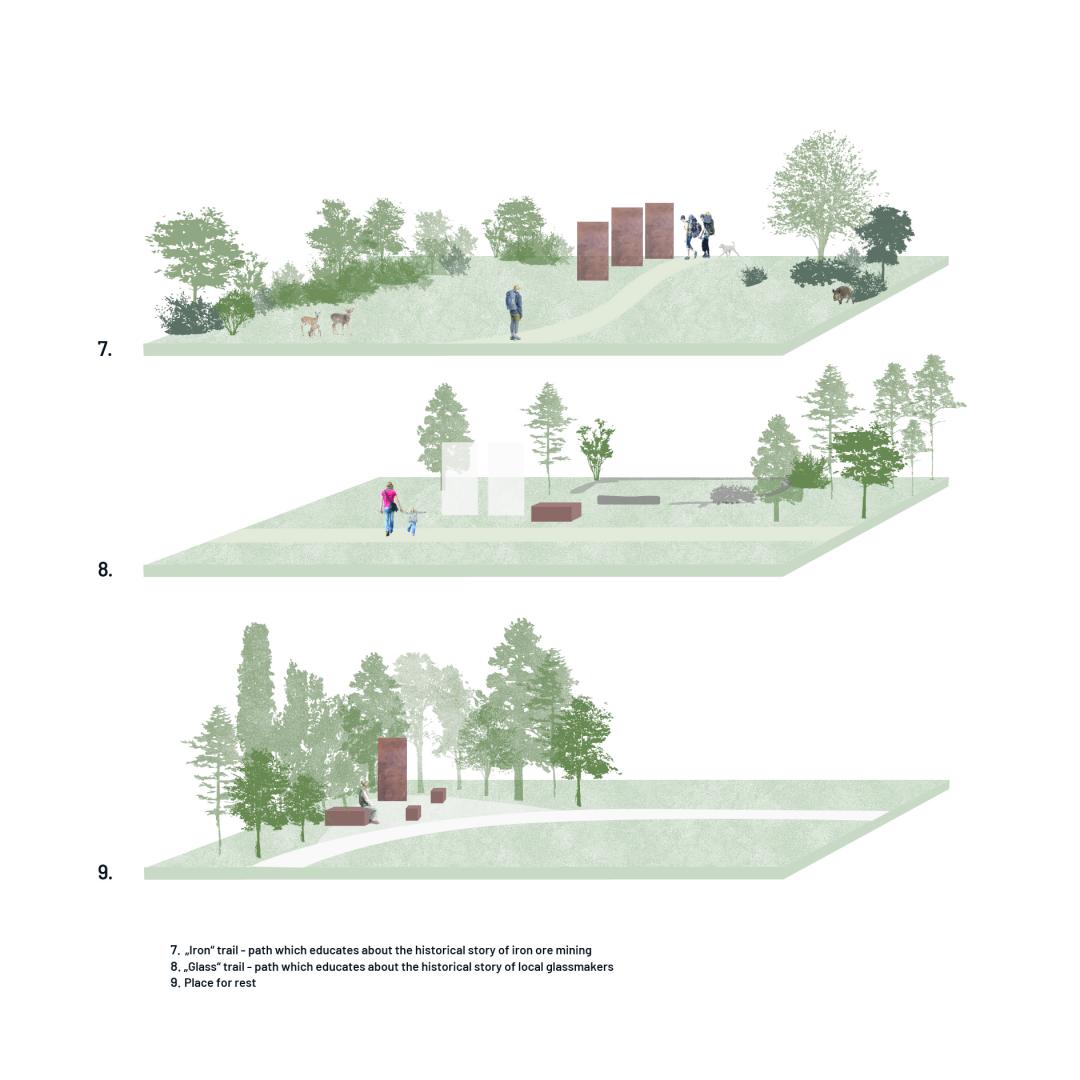(RE)vision of Landscape
Basic information
Project Title
Full project title
Category
Project Description
During the time we spent at this place, we began to dream together. We started thinking and discussing its future shape. We dared to name our concerns about our future lives. Not only here, in the territory of Železný Újezd, but all over the world. Is it possible to create a model project on how to live in the landscape again?
Rediscovering the ancient knowledge of the elementary roots of man and nature, manifestations, and the formation of the cultural landscape?
Project Region
EU Programme or fund
Description of the project
Summary
About two-thirds of the planet began to turn into a desert. The soil around the world is turning to dust. Soil desertification is thus becoming one of the most current threats to our climate and our species. Many civilizations around the world have already disappeared due to poor land management. In times of pandemics, we also see the global problems on our local scale. As the Czech Republic, we are not food independent. Our proposal deals with the idea of how to create a self-sufficient community in the Czech village. We are looking for the coexistence of man with nature, where man doesn’t plunder but takes care. We are inspired by the only functional system that exists, and that is nature. Nature doesn’t waste, recycles, and always cooperates.
We came to a classic Czech village, where unsustainable agricultural production predominates. We asked ourselves what is needed for survival and created a space covering all-important human needs. We integrate into the area of the agricultural area with new polycultural farming mixed with grazing, we revitalize upright watercourses and with the help of ponds and manholes, we keep the water at the point of fall and we are restoring the entire water cycle. The whole project is connected by a road system that connects man with nature, but also culture and history.
The problem is global, but if we do not start solving problems locally, we will not change anything big. Bad soil is a worldwide problem and its condition is constantly deteriorating through human activity. If we don't start doing something about it and find a solution, then according to the UN, we only have 60 years left. There are only 60 harvests left.
Key objectives for sustainability
The aim of our proposal was to avert the catastrophe that is approaching us as humanity. Teach people to work with nature, learn from it and help them find a relationship with it. The relationship to the soil in the Czech Republic was influenced by historical events, the consolidation of fields, and the creation of uniform monocultural fields. Biodiversity has disappeared from our landscape and nutrients and all moisture has been lost due to the intense load on the earth.
The village itself is arranged and supplemented so that it is able to function on its own, to be self-sufficient, and to satisfy all the needs of modern man. The main and dominant element of the whole design is a ring of agricultural fields located in the centre. We were inspired by our ancestors. They build their fields near the built-up area. In this situation we don’t need heavy transport and the bond between man and cultivated land is restored. The fields are chosen in such a size as to feed the current size of the village, as well as its possible expansion. Permaculture cultivation with alternating grazing in uncultivated fields is recommended. Crafts catered to the village, such as a healer, teacher, seamstress, and others.
The problem of wastewater is also solved in the village. Wastewater treatment plants are added to the houses and behind the village there is a device working with faeces, which are converted into heating briquettes or used as reserves of dwindling raw materials such as fluorine.
Wastewater treatment is a requirement and a major shortcoming in the village. We expect its warm welcome, which will bring money and prosperity to the inhabitants.
Key objectives for aesthetics and quality
Fields around the development under construction in a sympathetic shape around the centre of the village. Rugged fields into smaller areas with varied and diverse plantings, which bring life and colour to green grassy areas. The transition between the built-up area and the cultivated fields is created with the herbal and fragrant garden, which is the centre of mental well-being and the life.
As part of maintaining the water cycle and maintaining water on steep slopes, which are ameliorated, we have created swales. The swales are planted with colourful flora, which fulfils a functional component in the form of water retention and accumulation, but at the same time becomes a colourful band in the landscape. In the place of spring amelioration, we created an almost mystical place. A round watering hole for cattle complemented by twelve oaks. And so simple and functional elements have become the main works of art in the landscape, which are almost a land art.
Key objectives for inclusion
The whole study was created with the support of the creation of a new land layout in the entire cadastral area. As part of this procedure was planned that would logically divide the landscape so that the division would be beneficial for the owners and their maintenance. At the same time, the new division would be directed towards the promoted idea. In order for people to rebuild their relationship with nature, they should own it, but at the same time, its ownership should not be a matter of course.
The land should first be bought by the state, and then offered to interested parties who would respect the entire system. As a result of respecting the rules, the price of the land would be low. In this way, the state could support people who are interested in it.
Innovative character
We come up with the idea where not only a small farm lives efficiently and sustainably, but the whole village. A community that is independent to the extent that it is able to sell its sprouts and products and is thus economically sustainable. An innovative project that thinks of a new society that operates as one system similar to nature. Sustainable, recyclable, connected.
We are overtaken by our tramples and if we want to live here on Earth, it is time to change our thinking and our lives.
Collaborate, not plunder and think ecosystemically, ecologically, and economically.






